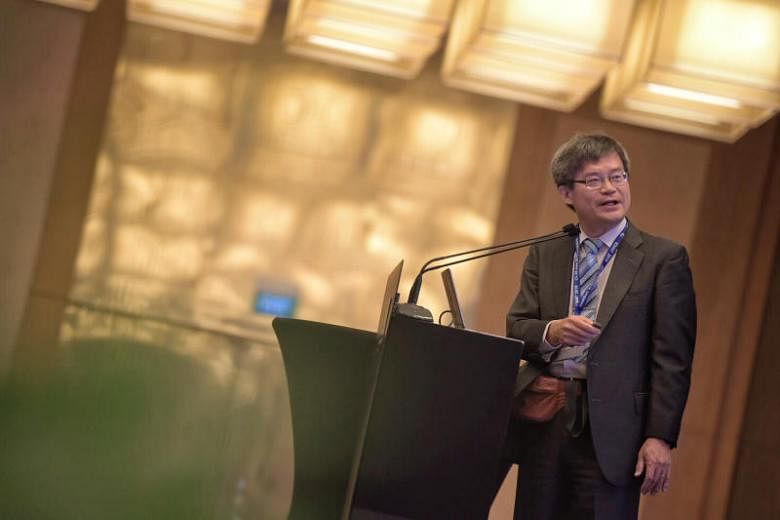SINGAPORE - Imagine the day when nano-sized diamond needles, each a thousand times thinner than human hair, are employed to transmit telecommunication data in bigger volumes and at faster speeds.
Investments in research and development in the field of materials science, and collaborations between research institutions and industries, may see such advances applied in everyday life sooner than you think.
Global experts are gathered in Singapore for the International Conference on Materials for Advanced Technologies to share ideas on new materials that can shape and advance civilisation, and how the technologies can be translated into real-world applications.
Deputy Prime Minister Heng Swee Keat, who was guest of honour at the opening ceremony on Monday (June 24), described Singapore's journey in the field of materials science.
He said that as a result of the Republic investing in science and technology R&D almost three decades ago, the manufacturing sector in Singapore, which is the country's largest export sector, is now largely driven by advanced materials technologies.
The sector is also globally competitive because the universities here and Agency for Science, Technology and Research (A*Star) institutes are able to anchor R&D collaborations with global companies.
"Many global companies that choose to anchor their regional operations here are supported by our skilled engineers and scientists, and our respect for intellectual property," added Mr Heng, who is the chairman of the National Research Foundation.
Citing technology firm Dyson as an example, Mr Heng described how Singapore's investments in battery technology R&D have resulted in the British company - known for its bladeless fans - opting to expand its footprint in Singapore by building its first electric car manufacturing plant here.
The plant is expected to be ready by 2020.
About 3,000 delegates from around the world are here for the conference, which runs from June 24 to 28 at the Sands Expo and Convention Centre at Marina Bay Sands. Among the participants are 850 scientists, including four Nobel laureates.
The biennial event is organised this year by the Materials Research Society Singapore and the Nanyang Technological University (NTU).
President of NTU, Professor Subra Suresh, said that research in materials science, including biological materials, contributes to many applications, such as drug delivery, diagnostics and therapeutics.
"There are so many different dimensions, different scales - from the tiniest to large materials, such as materials for bridges and roads."
He cited 3D-printing to show how materials science is poised to impact every aspect of how people live.
Prof Suresh said a group of NTU faculty members earlier this year used a large 3D-printing robot to create a bathroom measuring 1.6m by 1.5m by 2.8m in nine hours.
The process could potentially lower transport costs, carbon emissions and wastage.
In his speech, Mr Heng said technological changes can disrupt industries and also create new opportunities.
"We can either sink under the waves, or ride the rising tide of technological advances together," he added.


